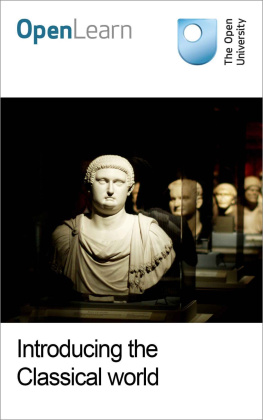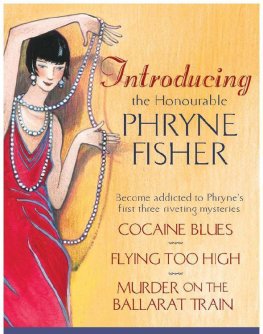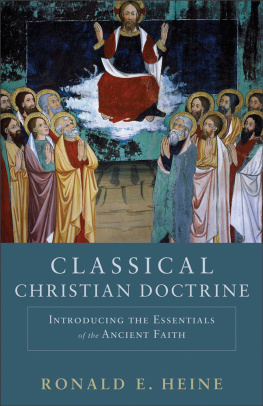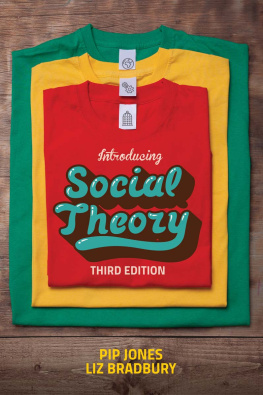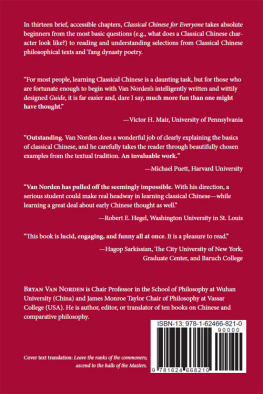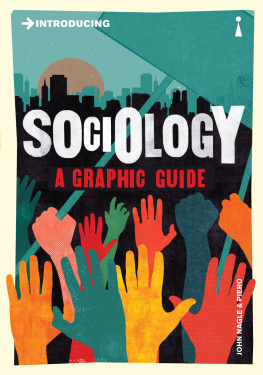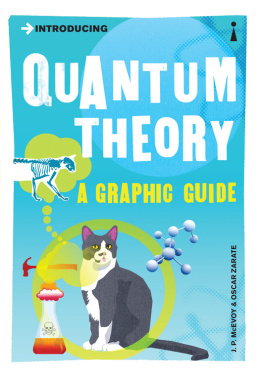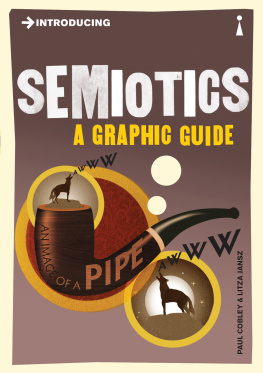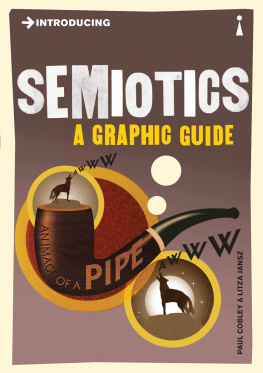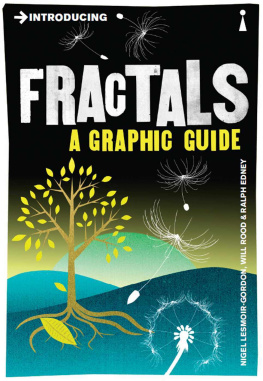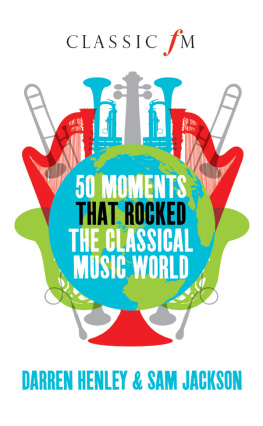Introducing the Classical world
Here you can read online Introducing the Classical world full text of the book (entire story) in english for free. Download pdf and epub, get meaning, cover and reviews about this ebook. year: 2016, publisher: The Open University, genre: Romance novel. Description of the work, (preface) as well as reviews are available. Best literature library LitArk.com created for fans of good reading and offers a wide selection of genres:
Romance novel
Science fiction
Adventure
Detective
Science
History
Home and family
Prose
Art
Politics
Computer
Non-fiction
Religion
Business
Children
Humor
Choose a favorite category and find really read worthwhile books. Enjoy immersion in the world of imagination, feel the emotions of the characters or learn something new for yourself, make an fascinating discovery.
- Book:Introducing the Classical world
- Author:
- Publisher:The Open University
- Genre:
- Year:2016
- Rating:5 / 5
- Favourites:Add to favourites
- Your mark:
- 100
- 1
- 2
- 3
- 4
- 5
Introducing the Classical world: summary, description and annotation
We offer to read an annotation, description, summary or preface (depends on what the author of the book "Introducing the Classical world" wrote himself). If you haven't found the necessary information about the book — write in the comments, we will try to find it.
Unknown: author's other books
Who wrote Introducing the Classical world? Find out the surname, the name of the author of the book and a list of all author's works by series.
Introducing the Classical world — read online for free the complete book (whole text) full work
Below is the text of the book, divided by pages. System saving the place of the last page read, allows you to conveniently read the book "Introducing the Classical world" online for free, without having to search again every time where you left off. Put a bookmark, and you can go to the page where you finished reading at any time.
Font size:
Interval:
Bookmark:
About this free course
This free course is an adapted extract from the Open University course A219 Exploring the classical world: www3.open.ac.uk/study/undergraduate/course/a219.htm.
This version of the content may include video, images and interactive content that may not be optimised for your device.
You can experience this free course as it was originally designed on OpenLearn, the home of free learning from The Open University www.open.edu/openlearn/history-the-arts/history/classical-studies/introducing-the-classical-world/content-section-0
There youll also be able to track your progress via your activity record, which you can use to demonstrate your learning.
The Open University Walton Hall, Milton Keynes MK7 6AA
Copyright 2016 The Open University
Intellectual property
Unless otherwise stated, this resource is released under the terms of the Creative Commons Licence v4.0 http://creativecommons.org/licenses/by-nc-sa/4.0/deed.en_GB. Within that The Open University interprets this licence in the following way: www.open.edu/openlearn/about-openlearn/frequently-asked-questions-on-openlearn. Copyright and rights falling outside the terms of the Creative Commons Licence are retained or controlled by The Open University. Please read the full text before using any of the content.
We believe the primary barrier to accessing high-quality educational experiences is cost, which is why we aim to publish as much free content as possible under an open licence. If it proves difficult to release content under our preferred Creative Commons licence (e.g. because we cant afford or gain the clearances or find suitable alternatives), we will still release the materials for free under a personal end-user licence.
This is because the learning experience will always be the same high quality offering and that should always be seen as positive even if at times the licensing is different to Creative Commons.
When using the content you must attribute us (The Open University) (the OU) and any identified author in accordance with the terms of the Creative Commons Licence.
The Acknowledgements section is used to list, amongst other things, third party (Proprietary), licensed content which is not subject to Creative Commons licensing. Proprietary content must be used (retained) intact and in context to the content at all times.
The Acknowledgements section is also used to bring to your attention any other Special Restrictions which may apply to the content. For example there may be times when the Creative Commons Non-Commercial Sharealike licence does not apply to any of the content even if owned by us (The Open University). In these instances, unless stated otherwise, the content may be used for personal and non-commercial use.
We have also identified as Proprietary other material included in the content which is not subject to Creative Commons Licence. These are OU logos, trading names and may extend to certain photographic and video images and sound recordings and any other material as may be brought to your attention.
Unauthorised use of any of the content may constitute a breach of the terms and conditions and/or intellectual property laws.
We reserve the right to alter, amend or bring to an end any terms and conditions provided here without notice.
All rights falling outside the terms of the Creative Commons licence are retained or controlled by The Open University.
Head of Intellectual Property, The Open University
The Open University
Martins the Printers, Berwick-upon-Tweed
978 1 47300 008 7 (.kdl)
978 1 47300 103 9 (.epub)
This course aims to get you started on exploring the Classical world by introducing you to the sources upon which you can build your knowledge and understanding. The course also gets you started on an exploration of both time and space in the Classical world.
This OpenLearn course is an adapted extract from the Open University course A219 Exploring the classical world.
After studying this course, you should be able to:
- understand how sources are used in studies of the Classical World
- understand the issues related to time and space in studies of the Classical World.
Welcome to A219_1 Introducing the Classical world. There will be many different reasons why you have chosen this course. You may have a lifelong fascination with the ancient world, and hope to nurture it by studying this course. Or you may know very little about it and are curious to know more. Alternatively, you may have been prompted by some of the many aspects of the Classical world that are present in our world today, be it physical remains, theatre, films, books, words or ideas. This introduction has two main parts:
How to explore the Classical world will discuss what it means to explore the Classical world. Much of this section will be taken up by the crucial issue of sources: what sources about the Classical world do we have at our disposal and how best can we use them?
Beginning to explore will start by looking at the basic parameters of time and space, helping you to develop a grasp of the Classical world that will prepare you to start looking at specific periods and places in your subsequent studies.
Anyone writing about the Classical world needs to make various choices concerning consistency.
Years. The course team have opted for BCE (Before the Common Era) and CE (Common Era) to refer to dates (we use them in the same way as the more traditional BC and AD). In some of the set books you will encounter the use of BC and AD instead, and you are welcome to use either convention, as long as you are consistent. Remember that BCE years (as opposed to CE years) count backwards. Therefore the year 431 BCE is earlier than the year 404 BCE.
Names. Many Greek (and some Latin) names have more than one English equivalent. For instance, you will find Achilles as well as Akhilleus, Thucydides as well as Thoukydides. The reason is that there are different conventions for transliterating words from Greek into the English alphabet. In this course we have tended to use what is often called Latinised spelling, for example, c rather than k, and ae rather than ai, although some of the books you will read (e.g. the translation of the Odyssey) use k rather than c, and so on. However, the difference is not important: both are correct. Again, you can choose which convention you adopt, as long as you are consistent. Opt for either Achilles or Akhilleus, and stick to it.
Ancient terms. On occasion it will be important to use Greek or Latin terms, usually because there is no English equivalent. The convention is to put these into italics, such as agora (the marketplace in Greek cities) or virtus (the ancestor of English virtue, but not covering quite the same range of meanings). Usually we will give these words in the singular; if we use the plural, we will usually make that explicit.
It's time to get a little closer to our topic: the Classical world. We will start off with an activity in the format used throughout the course A219 Exploring the Classical World, from which this course is derived.
Font size:
Interval:
Bookmark:
Similar books «Introducing the Classical world»
Look at similar books to Introducing the Classical world. We have selected literature similar in name and meaning in the hope of providing readers with more options to find new, interesting, not yet read works.
Discussion, reviews of the book Introducing the Classical world and just readers' own opinions. Leave your comments, write what you think about the work, its meaning or the main characters. Specify what exactly you liked and what you didn't like, and why you think so.

